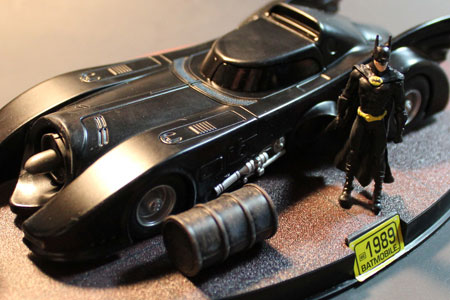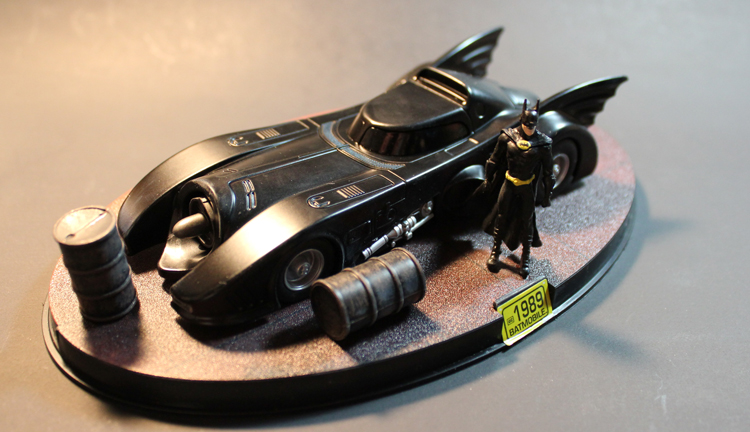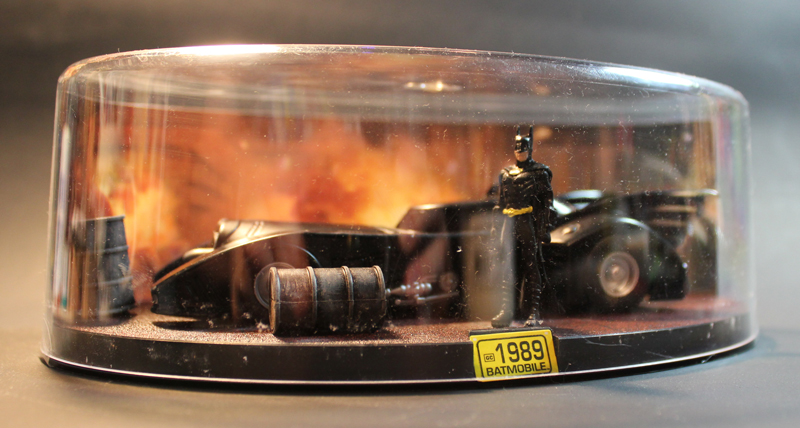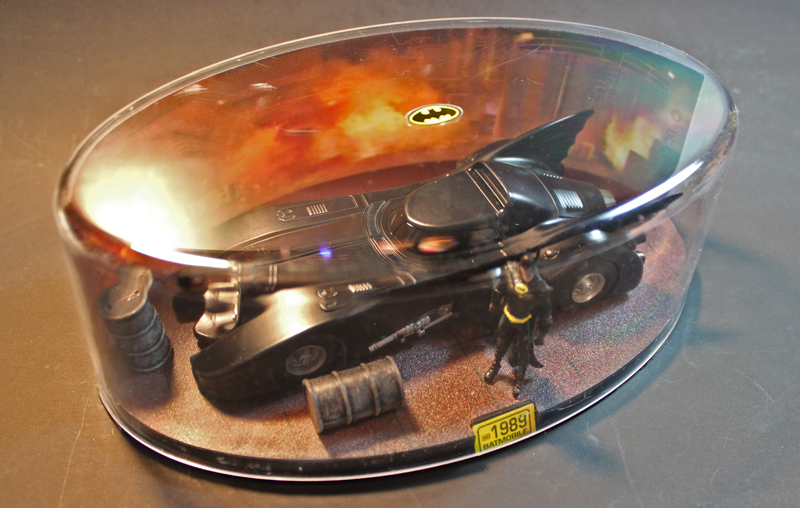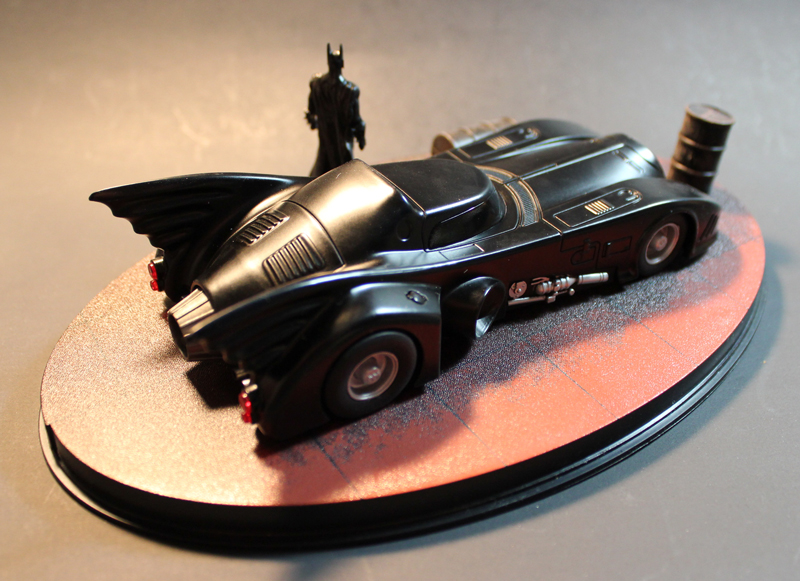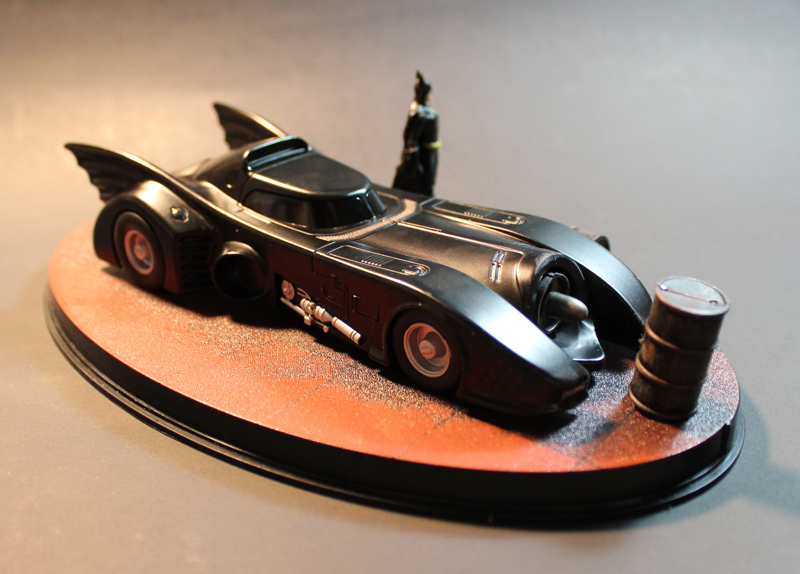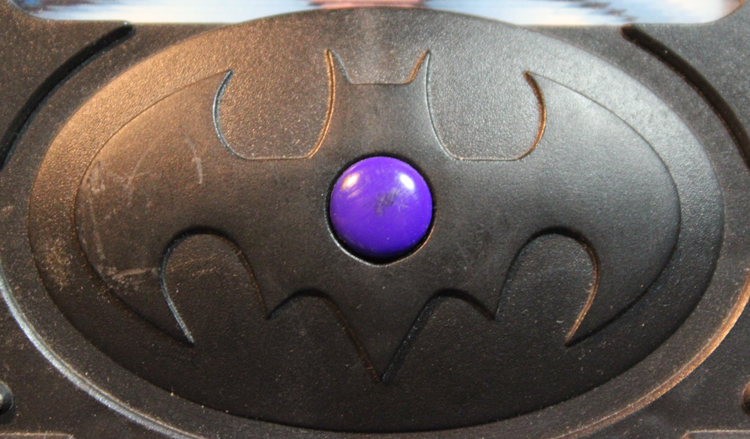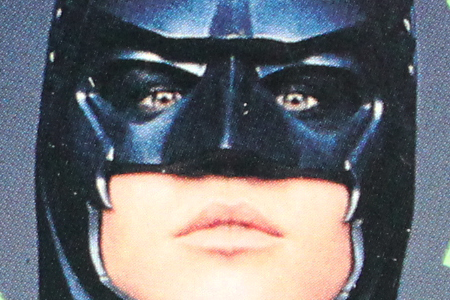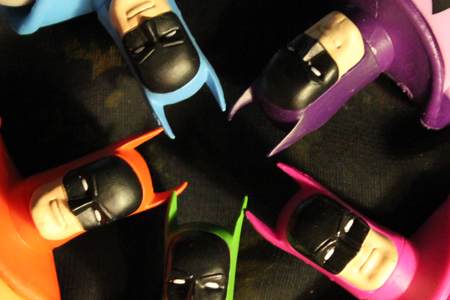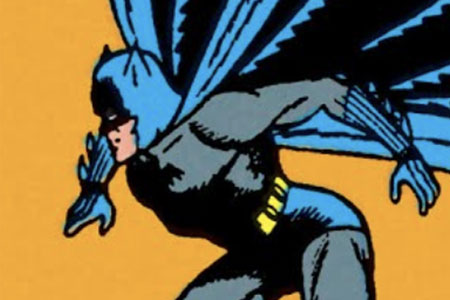Depending on when you were born, and how you were introduced to the Dark Knight Detective, one of three cars is usually conjured when someone says the word ‘Batmobile’ : the classy 1960s Adam West Batmobile, the moody 1989 ‘Tim Burton’ Batmobile, or the gloriously Art Deco Batmobile from The Animated Series. If you’re a weirdo or a toy nut, you’ll say something like “that Batmobile from the Super Powers line”, which just means that you’re hilariously old.
All three of these iconic Batmobiles represent a different species of Batman, each one a product of a different era – politically, socially, and by extension, creatively. More than this, each Batmobile is a kind of totemic representation of Batman’s current attitude. As stoic and internalized as Batman is as a character, his car is an externalized, visual representation of what he’s going through, his approach towards implementing justice, and what you can expect from his adventures – even if he never says a word. The couching animal-shape of the 1989 movie Batmobile perfectly represents that Batman’s use of fear and darkness as his most powerful weapons… just as much as Adam West’s Batmobile was built for top-down, convertible cruisin’, with plenty of time for dance parties between nabbing dopey criminals, or the carefully-crafted adventures of the animated, Bruce Timm-designed Batman.
These three Batmobiles are some of the most memorable because they were the most well-realized, seen in three dimensions or over a period of years. Many of the Batmobiles which appear in Batman’s comic book adventures don’t really stick around for more than a few issues: artists change, new plot devices are needed, and the tone of the hero’s adventures shifts. This kind of ever-changing Batmobile isn’t completely out of character or canon, after all: Bruce Wayne is a billionaire with technological knowledge from Earth and beyond, and the resources to tap into the finest minds in art and engineering. This guy can build a car, drive it once, and park it in the enormous recesses of the Batcave until Grant Morrison finds it in the shadows of some long-forgotten Batman adventure and makes it a vital plot point that no one could have ever seen coming. A few Batmobiles, however, stick around.
Eaglemoss is exploring the enormous range of Batmobiles with their Batman Automobilia series of scaled replicas, with 80 different vehicles planned (including a few which are meant for the sky or the water). That’s a whole lot of back issues to explore. Even the most ambitious exploration of Batmobiles, honorably performed by Corgi in the early 2000s, couldn’t delve this deeply into the obscurities of the Batmobile’s history. The first model in this Eaglemoss series is the 1989 Batmobile.
The edition featured here is a promotional edition given to me by Eaglemoss, so you’ll notice that it sits in a round base with a yellow label sticker, rather than the more common rectangular base. The objects included here, however, are the exact same in both editions. The standard ‘rectangle’ edition wisely repositions the oil barrels so that they don’t directly block the side view of the Batmobile.
One of the cooler aspects of this Eaglemoss 1989 Batmobile is the fact that it comes with an accurately scaled Michael Keaton Batman. Batman and his ride function as crimefighting partners, even more so than him and one of the many ill-fated Robins he liked to keep around. The car isn’t just a car – it comes when called, it fights crime, and it’s always there when Batman needs it. There’s no denying that the Batmobile itself is a character in Batman’s adventures, like Superman’s Krypto, and just as much a character as the city of Gotham.
This idea of ‘Batmobile as character’ isn’t completely fantastic: the Batmobile was recently legally declared a DC Comics ‘character’, and is subsequently subject to the same laws which govern copyrighted characters. This ruling was set to prevent car customizers from modifying existing vehicles into replicas of the ever-popular 1966 TV Batmobile without paying royalties to DC Comics. In addition to setting a legal precedent, however, it’s an idea that reinforces the Batmobile as a vital, living element of the narrative surrounding the Batman. The car is an avatar of the Bat. I’m not a car person by any stretch, but collecting different Batmobiles always felt more like action figure collecting than collecting scale models.
There’s also that Freudian idea which pairs masculinity with car ownership. In a 2005 Cornell study1, males who had their masculinity questioned were more likely to support the war and buy fancy SUVs. As a psychological icon of raw masculinity, something which teems in comic book culture, this is the Batmobile.
The Eaglemoss Batmobile is lovingly presented under a translucent plastic box, keeping it safe from all-invasive dust. The back wall of the box features a lenticular background with animated explosions in a factory setting, completely in sync with the feeling of the film, and presumably representing the Joker’s hideout. The upper part of the container easily lifts off once a few stickers are peeled off so you can access the car beneath. The ‘lid’ section doesn’t stay on after the stickers are removed unfortunately, and some form of interference fit or snap-on top would be pretty awesome.
The Batmobile is fixed to the textured, plastic base with a couple of screws which are revealed on the bottom of the box. While I haven’t tried to dissect the display case, I’d venture that this would be the first step in setting your Batmobile free, if you were so inclined. The car is paired with the small, static figure of Keaton Batman, and a couple of oil barrels. You know, the kind that had a guest spot in every movie and video game between 1979 and 1995. It’s a long and depressing IMDB page. 1980s bad guys just love keeping a couple of highly volatile oil barrels around.
The original ’89 Batmobile isn’t a highly-detailed car. Instead, it focuses on sleekness and the suggestion of streamlined, organic animal forms. Ribbed tail fins, like the male nipple, have no practical purpose other than to look scary. Anton Furst, the designer of the 1989 Batmobile, wanted a “brutal expression of a car”2 to match Burton’s vision of a return to the mean, crime-filled streets of the original Batman, before the Silver Age of comics and the 1966 TV show made Batman a much lighter character, fighting bad guys with weird rainbow powers, or whose dastardly plans involved stealing all of Gotham’s Easter eggs. This Batman would get shot at by people who wanted to end lives quickly, not creatively. The Eaglemoss interpretation captures this sleekness and smoothness, and the minimalistic approach towards a streetwise, stealthy battle tank, without exaggerating any details to make it a more toyetic vehicle. This is obviously a much higher-end piece and stands up against dozens upon dozens of collectibles based on the exact same movie car.
The fine attention to details is a given, and it’s a very sweet piece. The finish on this type of Batmobile is something that various model producers take the most license with, ranging from a black gloss to a dull, grey-black finish. This in-between semi-gloss black feels like the truest representation of the car. The scale is also pretty ideal; it’s large enough to feel substantial and capture fine details, but not so large that it takes up a lot of space.
There are a lot of 1989 Batmobiles to choose from in just about every scale, from those with pull-back action and launching missiles, to mid-range and high-end collectibles like this one. You can even choose from a half dozen 1/64th Hot Wheels with different finishes and fantasy paint jobs. It’s the incredibly subtle differences between these that set them apart, each one finding another point of accuracy, or missing one tiny detail, making the process of observation exciting.
This Batmobile? Decidedly brutal.
1 http://www.news.cornell.edu/stories/aug05/soc.gender.dea.html
2 http://www.amazon.com/gp/product/1608871037/ref=as_li_ss_tl?ie=UTF8&camp=1789&creative=390957&creativeASIN=1608871037&linkCode=as2&tag=squid01-20
 C. David is a writer and artist living in the Hudson Valley, NY. He loves pinball, Wazmo Nariz, Rem Lezar, MODOK, pogs, Ultra Monsters, 80s horror, and is secretly very enthusiastic about everything else not listed here.
C. David is a writer and artist living in the Hudson Valley, NY. He loves pinball, Wazmo Nariz, Rem Lezar, MODOK, pogs, Ultra Monsters, 80s horror, and is secretly very enthusiastic about everything else not listed here.
